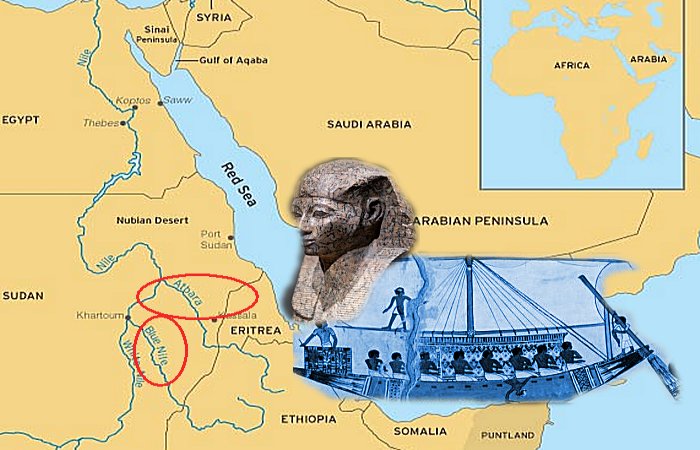Mysterious Location Of The Amazing Land Of Punt – Can This Puzzle Be Solved One Day?
A. Sutherland - AncientPages.com - The legendary kingdom of Punt has long been argued by scholars, who are not exactly sure about the location of Punt. It is believed to have been in the region of the river Atbara in what is now Ethiopia.
It was a kingdom south of Nubia, possibly between the Blue Nile and the Red Sea (the precise location is not known, with arguments made for what is today southern Sudan or Ethiopia
According to the known inscriptions, Punt was located not far away from Egypt and to the east. It was sometimes called ‘God’s Land’ and surrounded with respect.
The ancient Egyptians used to trade with the neighboring countries in the region of the Mediterranean Sea and along the Nile River to the south and set up trade routes to Cyprus, Crete, Greece, Syro-Palestine, Punt and Nubia.
Montuhotep III (or Sankhkare Mentuhotep III) of the Eleventh dynasty was Pharaoh of Egypt during the Middle Kingdom.
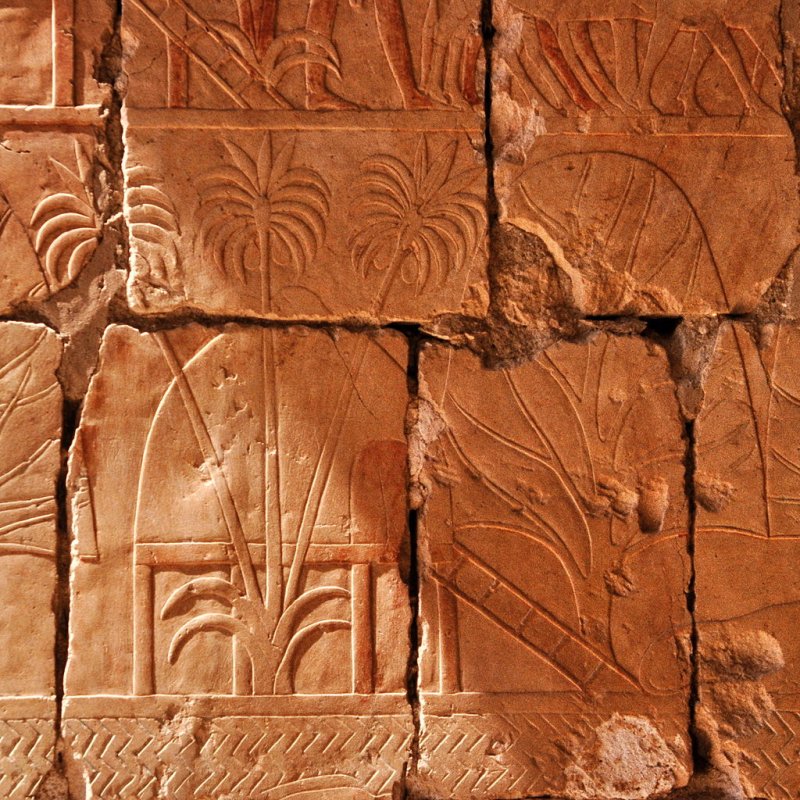
This relief depicts incense and myrrh trees obtained by Hatshepsut's expedition to Punt. Image credit: Hans Bernhard (Schnobby) - CC BY-SA 3.0
He was known for his architectural innovations but also for his military excursion to the land of Punt, where 3000 strong warriors took part in, and so was the famous and powerful Queen Hatshepsut.
Trading expeditions of the ancient Egypt were often dangerous and Hatshepsut’s expedition to Punt was one of them. It took over three years.
Undoubtedly, Hatshepsut considered her famous Punt expedition the greatest achievement recorded during the time of her reign. On her return this remarkable queen ordered to build a magnificent temple that resembled exactly what she had seen.
Hatshepsut’s reliefs describe and depict with many details, a land of peace and wealth, with ‘terraces of myrrh trees’, gardens and a plenty of exotic plants and animals, boats sailing to Punt, and the trade exchange with the Puntites.
 This is a fine relief of members of Hatshepsut's trading expedition to the mysterious 'Land of Punt' from this pharaoh's elegant mortuary temple at Deir El-Bahri. In this scene, Egyptian soldiers bear tree branches and axes. Image credit: Σταύρος - CC BY 2.0
This is a fine relief of members of Hatshepsut's trading expedition to the mysterious 'Land of Punt' from this pharaoh's elegant mortuary temple at Deir El-Bahri. In this scene, Egyptian soldiers bear tree branches and axes. Image credit: Σταύρος - CC BY 2.0
According to the temple reliefs, the Land of Punt was ruled at that time by King Parahu and Queen Ati. Based on the unnatural variety and richness of the fauna and flora, of which some were Arabian, some African and some defied identification, many different opinions were created about the location of Punt.
Interestingly is that if the land of Punt describes for example, Palestine, according to many researchers, everything begins to fall into place. The Bible often mentions king Solomon’s interest in exotic animals and plants; there are also several references to the ‘mountains of myrrh’.
Image 1 - Mariette, Auguste, 1821-1881 - This image comes from the Travelers in the Middle East Archive - CC BY-SA 2.5 ; Image 2 - Supposed location around the Red Sea and major travel routes by land and sea. Image credit: Cush - Public Domain
Could not Punt (which should be read ‘Pwene’ or ‘Pwenet’) simply be the Egyptian version of the name Phoenicia? Researchers say that on Hatshepsut’s reliefs, are Semites depicted with pointed beards, curved noses, and skins a shade paler than the Egyptians.
Her voyage to Punt by sea and then by land – most probably was from Thebes to the Red Sea and to the Gulf of Aqaba and then she encountered date palms growing along the beaches up to the head of the Gulf’s landscape. Were these richly described ‘marvels of Punt’ from this region of the world? Was Hatshepsut traveling to Sinai, perhaps? So, why did the queen glorify the expedition as the ‘major achievement of her reign’?
Punt is described as being to the east of Egypt, Hatshepsut, on the other, identifies Punt with Lebanon, so, where was the mysterious Punt?
The exact location of the Land of Punt is still disputed by historians, scholars, archaeologists, and others in the present day. Can this puzzle be solved one day?
Written by – A. Sutherland AncientPages.com Staff Writer
Copyright © AncientPages.com All rights reserved. This material may not be published, broadcast, rewritten or redistributed in whole or part without the express written permission of AncientPages.com
Expand for referencesReferences:
Rawlinson, George. Ancient Egypt
J. Boyle, Blood Ransom: Stories from the Front Line in the War against Somali Piracy
More From Ancient Pages
-
 Unexplained Dangerous Secret In The Great Smoky Mountains
Featured Stories | Apr 20, 2024
Unexplained Dangerous Secret In The Great Smoky Mountains
Featured Stories | Apr 20, 2024 -
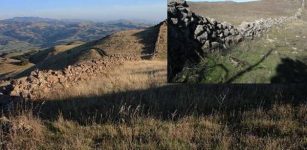 Mystery Of Great Wall Of California: An Ancient Unsolved Enigma
Civilizations | Sep 11, 2018
Mystery Of Great Wall Of California: An Ancient Unsolved Enigma
Civilizations | Sep 11, 2018 -
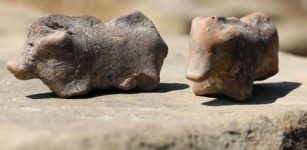 Unique 3,500-Year-Old Clay Pig Figurines Used As Children’s Toys Found In Poland
Archaeology | Aug 19, 2020
Unique 3,500-Year-Old Clay Pig Figurines Used As Children’s Toys Found In Poland
Archaeology | Aug 19, 2020 -
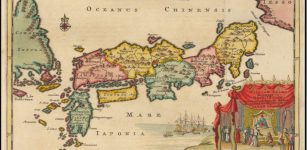 Spread Of Transeurasian Languages Was Due To Agriculture Study Reveals
Archaeology | Nov 10, 2021
Spread Of Transeurasian Languages Was Due To Agriculture Study Reveals
Archaeology | Nov 10, 2021 -
 Mesopotamian God Nabu Inscribed The Human Fates Determined By The Gods
Featured Stories | Aug 7, 2018
Mesopotamian God Nabu Inscribed The Human Fates Determined By The Gods
Featured Stories | Aug 7, 2018 -
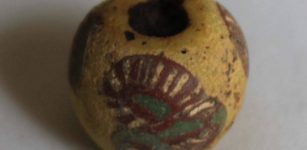 Unique Glass Bead From The Time Of Jesus Discovered In Fire Pit In Sweden
Archaeology | Jun 17, 2017
Unique Glass Bead From The Time Of Jesus Discovered In Fire Pit In Sweden
Archaeology | Jun 17, 2017 -
 Skull Of Mysterious, Extinct Cousin Of Neanderthals Recreated From A Fossilized Finger
Archaeology | Sep 19, 2019
Skull Of Mysterious, Extinct Cousin Of Neanderthals Recreated From A Fossilized Finger
Archaeology | Sep 19, 2019 -
 Riddle Of The Ancient Sarcophagus And Its Strange Properties – Can Science Solve This Mystery?
Ancient Mysteries | Nov 7, 2019
Riddle Of The Ancient Sarcophagus And Its Strange Properties – Can Science Solve This Mystery?
Ancient Mysteries | Nov 7, 2019 -
 Ancient Fresco Tomb Dated A 1000-Years Ago Was Accidentally Discovered In Northern China
Archaeology | May 5, 2020
Ancient Fresco Tomb Dated A 1000-Years Ago Was Accidentally Discovered In Northern China
Archaeology | May 5, 2020 -
 850,000-Year-Old Remains Of Homo Antecessor Found At Atapuerca, Spain
Archaeology | Jul 30, 2024
850,000-Year-Old Remains Of Homo Antecessor Found At Atapuerca, Spain
Archaeology | Jul 30, 2024 -
 Mysterious Mummified Woman With A Christian Cross On Her Chest Dashes Hopes Of Finding First Russian Fortress In Yakutia
Archaeology | Dec 12, 2019
Mysterious Mummified Woman With A Christian Cross On Her Chest Dashes Hopes Of Finding First Russian Fortress In Yakutia
Archaeology | Dec 12, 2019 -
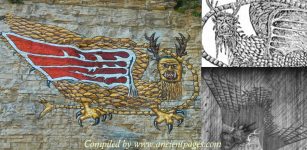 Mysterious Piasa Bird – Native American Dragon That Existed Thousands Of Moons Before The Pale Face Came
Featured Stories | Jan 1, 2018
Mysterious Piasa Bird – Native American Dragon That Existed Thousands Of Moons Before The Pale Face Came
Featured Stories | Jan 1, 2018 -
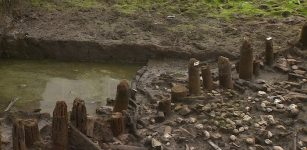 The Pompeii Of The Fens: Ancient Village In Cambridgeshire Burned Down 3,000 Years Ago For Unknown Reasons
Archaeology | Jul 14, 2016
The Pompeii Of The Fens: Ancient Village In Cambridgeshire Burned Down 3,000 Years Ago For Unknown Reasons
Archaeology | Jul 14, 2016 -
 Facial Reconstruction Of 3.8-Million-Year-Old Skull Shows What Our Ancestors Really Looked Like
Archaeology | Dec 29, 2022
Facial Reconstruction Of 3.8-Million-Year-Old Skull Shows What Our Ancestors Really Looked Like
Archaeology | Dec 29, 2022 -
 On This Day In History: Mary Queen Of Scots Was Forced To Abdicate – On July 24, 1567
News | Jul 24, 2016
On This Day In History: Mary Queen Of Scots Was Forced To Abdicate – On July 24, 1567
News | Jul 24, 2016 -
 Decoding The Mysterious Medieval Pearl Manuscript
Linguistic Discoveries | Mar 26, 2025
Decoding The Mysterious Medieval Pearl Manuscript
Linguistic Discoveries | Mar 26, 2025 -
 1,700-Year-Old Vase For Olive Oil And Wine Unearthed At Historic Site Of Diyarbakir Fortress, Turkey
Archaeology | Aug 5, 2022
1,700-Year-Old Vase For Olive Oil And Wine Unearthed At Historic Site Of Diyarbakir Fortress, Turkey
Archaeology | Aug 5, 2022 -
 Deception And Hidden Truth – Ancient Struggle Of The Eagle And Serpent – Part 1
Ancient Mysteries | Sep 4, 2019
Deception And Hidden Truth – Ancient Struggle Of The Eagle And Serpent – Part 1
Ancient Mysteries | Sep 4, 2019 -
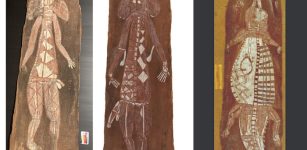 Solving The Bark Painting Mystery In Australia
Archaeology | Feb 23, 2023
Solving The Bark Painting Mystery In Australia
Archaeology | Feb 23, 2023 -
 10 Magnificent Ancient Libraries
Featured Stories | Feb 6, 2016
10 Magnificent Ancient Libraries
Featured Stories | Feb 6, 2016

